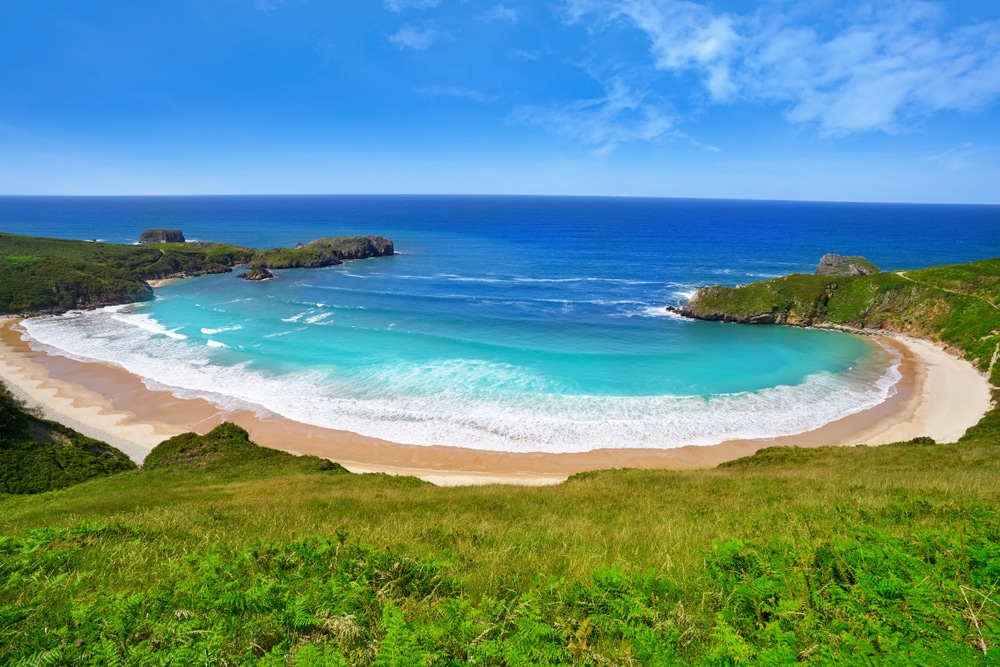Asturias is located in the north of Spain . With its wild cliffs and green landscapes, it invites you to hike and linger. This untouched nature stretches for more than 300 kilometers. Again and again you can see fishing villages here, which were built directly into the steep mountain slopes and extend down to the coast. The whalers and their families lived in the shelter of these slopes. The small harbour villages also offered protection to the royal ships from storms. Even today, they take their visitors back to this time.

A unique experience of unspoiled nature can be found in the Biosphere Reserves of Asturias, recognized by UNESCO. The Principality of Asturias is known and loved as a natural paradise, as more than 30% of the landscape is protected. This also provides numerous wildlife species with the life form they need. Here, the Cantabrian brown bear finds a protected environment in the beech and oak forests. Alto Nalón offers the capercaillie and its conspecifics a safe home with its beautiful grassy landscape.
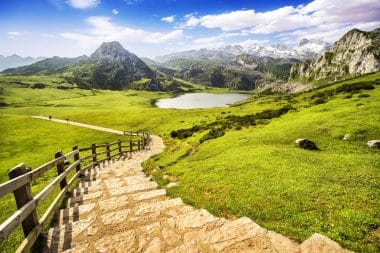
The coastal mountains Cordillera del Sueve offer a special kind of excursion. Here you can admire the Asturcones, a semi-wild breed of horse. The Mirador del Fito viewpoint offers its visitors a magnificent view over the mountains to the coast.
In the 9th century, the Asturian King Alfonso II set out from his court in Oviedo to the tomb of the Apostle James. In doing so, he laid the foundation stone for the pilgrimage path to Santiago de Compostela. The “Camino Primitivo” runs through the western part of the region. A hike is recommended here.
Beaches in Asturias
There are many secluded beaches along the Costa Verde. On the one hand, very different sections of coastline offer imposing rocky cliffs with magnificent stone formations in the sea. On the other hand, there are always sandy beaches that simply invite you to enjoy. These beaches are natural. They are often deserted and offer visitors peace and relaxation.
Those who prefer a livelier environment on the beach are in the right place in villages such as Llanes, Ribadesella, Luarca and other places along the Costa Verde. The villages captivate with a colourful mixture of old traditions and modern tourism. Here, the local image still dominates, far away from mass tourism.
The cities of Asturias
Excursions to the attractive cities of Asturias offer a change between hikes in the countryside and days at the beach. The villages and towns captivate with their own attractions, which are located in these places. Oviedo and Gijón, for example, are recommended.
Oviedo
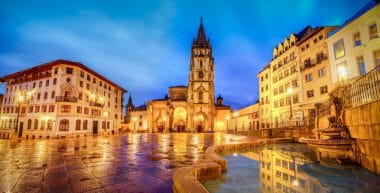
Oviedo is the capital of Asturias and is located in the hinterland of the Costa Verde. The origin of this city finds its beginning in the construction of a monastery. The old town is located on a hill and thus offered protection from attackers in times gone by. The focus here is on the famous Cathedral of San Salvador, whose construction began in the 14th century and lasted until the 16th century. Oviedo, with its old town, cathedral and other magnificent Romanesque churches, is a UNESCO World Heritage Site.
Although Oviedo has a long and exciting history, it is cosmopolitan and modern, especially in the outskirts, thanks to the industry located there and a well-frequented university. Cosy bars and cafés invite you to linger. Romantically located in the old town or near the university, there are numerous taverns that provide a vibrant ambience.
From Oviedo, a trip to the Naranco is worthwhile. This mountain not only offers a unique view of Oviedo and the magnificent mountains, but the view goes all the way to the Costa Verde. The figure of Christ is the symbol of Naranco.
Gijón
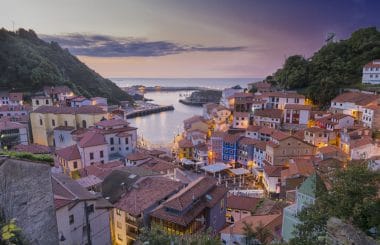
Gijón is the largest city in Asturias with about 275,000 inhabitants. Due to the settlement of industry, people came to this region to work. Today, Gijón impresses with its magnificent marina. Sailing ships and yachts dominate the scene here and give the harbour a sophisticated shine.
A special experience is a visit to the Aquarium of Gijón. In addition to the numerous sea creatures, the aquarium also offers an interesting insight into the marine fauna and flora. Here, various marine ecosystems are skilfully captured and brought closer to the visitor.
Gijón is rich in museums that are worth visiting. More than ten museums with different themes will not let you get bored.
The Museu del Pueblu d’Asturies is particularly popular. This museum resurrects bygone times both indoors and outdoors. The large outdoor area invites you to take a siesta. With a view of the cider house, a mill and other buildings from the past, everyone will find their personal favourite place.
Culinary journey through Asturias
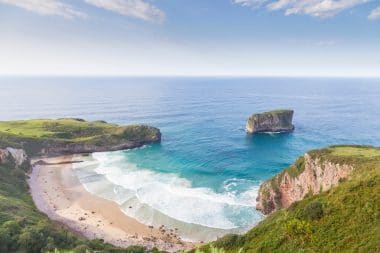
In the taverns and bars there are delicious local food and drinks. This applies to the coastal region, but also to the hinterland. No wine is grown in Asturias. The traditional cider (Sidra) is often offered here in the “Sidrerias”. It is also used in the kitchen for local dishes.
Probably the most famous dish is the Fabada Asturiana. This consists of meat, sausages and white beans. Other ingredients are added to taste. The offer ranges from offal to black pudding and tripe. There are no limits to the imagination here.
In the mountains of the hinterland, delicious cheeses are produced. The village of Cabrales is not only an experience for gourmets.


